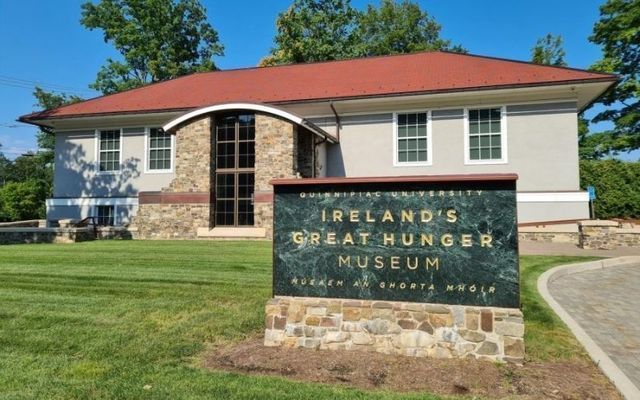Quinnipiac University in Hamden, Connecticut answered the long-standing question of what its plans are for the Great Hunger Museum last week with the announcement that the extensive collection of Irish Famine art would be given to the Gaelic-American Club (GAC) of Fairfield.
While the development was welcomed by many, the Save Ireland’s Great Hunger Museum (SIGHM) group which hoped to keep the museum at Quinnipiac is unsatisfied with the decision and on Tuesday afternoon was scheduled to meet with the Connecticut Attorney General’s Office which has been investigating the matter.
“We want to drill down and see what the attorney general is doing to resolve the fiduciary responsibilities of Quinnipiac in terms of the collection and terms of ownership of the collection which we believe is in the public trust, not necessarily just Quinnipiac. And that’s because of the donors and artists who donated their work to the museum and who want their work there.
"We also have questions about how Quinnipiac can give away the collection without the attorney general’s inquiry being completed,” Turlough McConnell, SIGHM leader, told the Irish Voice newspaper, sister publication to IrishCentral.
The GAC had several meetings with Quinnipiac officials about relocating the museum’s collection to a new building in Fairfield; the museum has been shut for two years because of Covid and what Quinnipiac had said was insufficient public interest and fundraising to keep it open. SIGHM also met with university officials with a plan to keep the museum in its present location and reopen it by St. Patrick’s Day.
But the university had other plans and says it will work collaboratively with the GAC to move the huge collection of Famine art to Fairfield. The group says it has started putting plans in place for what will undoubtedly be a years-long process requiring a multi-million dollar investment.
“The GAC has already begun working with many people who are connected with the collection to create a new vision moving forward. This will include cooperation with various universities who are interested in connecting to their own Irish studies programs," a statement from the group, which has 6,000 members, said last week.
"The aim is to provide educational opportunities to many institutions to provide a deeper understanding of the causes and consequences of the Great Hunger in Ireland, and by extension, the pressing issues of food security and migration more globally.
“As part of the GAC’s plans, the museum will sit within the Fairfield Historic District, alongside other local museums and the downtown shopping district, and within walking distance of the (GAC) headquarters. It is cause for great celebration that the Great Hunger Collection will not remain shuttered.”
On Sunday, the AOH hosted a breakfast at the GAC’s headquarters, and $10,000 was donated to a newly formed corporation, Ireland’s Great Hunger Museum of Fairfield, Inc., which will take the lead in bringing the new museum to reality. Professor Christine Kinealy was in Fairfield GAC on Sunday in regard to a long-standing invitation to speak at the breakfast by the AOH. It was unrelated to the recent announcement about Ireland's Great Hunger Museum.
Amy O'Shea, Vice President of Ireland’s Great Hunger Museum of Fairfield, Inc., said at the breakfast: “The journey you join us on today started when a couple of Gaelic-American board members took up the fight to reopen a shuttered museum in Hamden…what followed was months of negotiations and quiet representation of the Irish American community in Connecticut. Months of late-night phone calls, text messages, and emails, taking us to this momentous decision by Quinnipiac on Friday. The decision to transfer this great collection to this Gaelic-American Club right here in Fairfield.
“Over the coming months, we will build something new and beautiful and we will show the world that Irish America is as strong as ever.”
*Editor's Note: March 11: The article has been updated to reflect Professor Christine Kinealy's attendance at the Fairfield GAC on March 6.
*This column first appeared in the March 9 edition of the weekly Irish Voice newspaper, sister publication to IrishCentral.




Comments